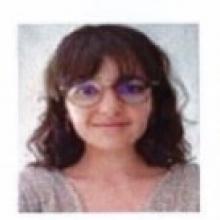Evolutionary Genetics of Interactions Group
Members

Ingénieur d'études CDD
CNRS

Maître de conférences
UCBL
Tel: 04 72 43 29 16
Post-doc
CNRS

Chargé de recherche
CNRS
Tel: 33 04 72 43 29 12
Post-doc
autre

Maîtresse de conférence universitaire
UCBL
Tel: 04 72 43 29 16

Professeur des universités
UCBL

Doctorante
CNRS
Tel: 04 72 44 81 42

Chargée de recherche
CNRS
Tel: 33 04 72 44 81 01

Maîtresse de conférences
UCBL
Tel: 04 72 43 29 10

Doctorante
UCBL
Tel: 04 72 44 81 42
Doctorante
UCBL
Doctorante
UCBL
Assistante ingénieure CDD
UCBL

Technicien CDD
UCBL

Maître de conférence universitaire
UCBL
Tel: 33 04 72 44 81 01

Directeur de recherche
CNRS
Tel: 33 04 72 43 19 21

Professeure des universités
UCBL
Tel: 33 04 72 44 82 16
Professeur des universités
VetAgro-Sup
Tel: 33 04 78 87 27 02
Living systems are made up of a multitude of interlocking levels of organization, involving cooperation and conflict. Cooperation and the selection of systems operating in a coordinated manner has allowed so-called "major" evolutionary transitions, towards new scales of individuality, such as the eukaryotic cell. Nevertheless, natural selection continues to operate at all scales, generating possible evolutionary conflicts between the different components of the individual.
Our research is in line with this perspective, and aims to better understand the nature and evolutionary implications of the interactions between the multiple components of organisms, from genes to symbiotic bacteria, viruses and transposable elements. We also explore the impact of these interactions on the dynamics of genetic information, through horizontal transfer, or on genetic innovation and adaptation, through domestication. Our research, mainly experimental, but also theoretical, is implemented on arthropod models, and is mainly related to genetics and evolutionary genomics.
The team is structured along two main axis:
- Intragenomic interactions: transposable elements (resp. Marie Fablet)
Ex1: The evolutionary dynamics of transposable elements (TEs) in genomes, in relation to their natural variability. Our models include natural populations of Drosophila melanogaster and D. simulans, as well as species of agronomic or societal interest, such as the invasive species D. suzukii or the tiger mosquito Aedes albopictus.
Ex2: Interactions between ET control and anti-viral immunity. We are studying the molecular mechanisms of RNA interference at the origin of the entanglement of these two processes, as well as the co-evolutionary implications, using experimental infections of different viruses on several Drosophila lines.
People involved : CV, MB, MF
- Symbiosis, the driving force of evolution (resp. Natacha Kremer)
Ex1 : Certain symbiotic bacteria provide metabolic capacities that the insect lacks. We are analysing these interactions in haematophagous insects (bedbugs, ticks) and phytophagous insects (the whitefly Bemisia tabaci) using approaches combining phenotype analysis, genetics, physiology and metabolomics.
Ex2: Parasitoid insects have domesticated viral genes enabling them to bypass the immune responses of their hosts. We are studying the frequency and adaptive significance of these events and, more generally, looking into the factors structuring horizontal transfers in host-parasitoid communities.
People involved: NK, LM, LZ, JMD, JV, FV, SC
Publications
Display of 91 to 120 publications on 391 in total
The transposable element-rich genome of the cereal pest Sitophilus oryzae
BMC Biology . 19 ( 1 ) : 241
Journal article
see the publicationChromosomal scale assembly of parasitic wasp genome reveals symbiotic virus colonization
Communications Biology . 4 ( 1 ) : 1-15
Journal article
see the publicationChapitre 5. Principes, mise en œuvre et perspectives de la technique de l’insecte stérile
Biocontrôle. Éléments pour une protection agroécologique des cultures . 9782759230761 : 75-87
Book chapter
see the publicationIn vivo MRI characterization of the Xlf-/- mouse model of genetic radiosensitivity following low-dose in utero irradiation
European Society for Magnetic Resonance in Medicine and Biology (ESMRMB Congress 2020) .
Conference paper
see the publicationLa tête de « Jupiter capitolin » de Fréjus (Forum Iulii)
Revue archéologique de Narbonnaise . ( 53 ) : 239-266
Journal article
see the publicationGenomic Analysis of European Drosophila melanogaster Populations Reveals Longitudinal Structure, Continent-Wide Selection, and Previously Unknown DNA Viruses
Molecular Biology and Evolution . 37 ( 9 ) : 2661-2678
Journal article
see the publicationSuperparasitism by a parasitoid wasp: The absence of sublethal effects from the neonicotinoid insecticide imidacloprid enlightens the specificity of the cholinergic pathway involved
Ecotoxicology and Environmental Safety . 201 : 110809
Journal article
see the publicationEndosymbiont diversity in natural populations of Tetranychus mites is rapidly lost under laboratory conditions
Heredity . 124 ( 4 ) : 603-617
Journal article
see the publicationCombining sterile and incompatible insect techniques for the population suppression of Drosophila suzukii
Journal of Pest Science . 93 ( 2 ) : 647 - 661
Journal article
see the publicationHomology-Free Detection of Transposable Elements Unveils Their Dynamics in Three Ecologically Distinct Rhodnius Species
Genes . 11 ( 2 ) : 170
Journal article
see the publicationStress & Symbiosis: Heads or Tails?
Frontiers in Ecology and Evolution . : 1-9
Journal article
see the publicationY chromosome makes fruit flies die younger
Peer Community In Evolutionary Biology . : 100105
Other publication
see the publicationA behavior-manipulating virus relative as a source of adaptive genes for Drosophila parasitoids
Molecular Biology and Evolution . 37 ( 10 ) : 2791-2807
Journal article
see the publicationExperimental evolution of virulence and associated traits in a Drosophila melanogaster - Wolbachia symbiosis
Peer Community In Evolutionary Biology . : e9
DOI: 10.24072/pcjournal.9
Journal article
see the publicationInsects and incest: Sib‐mating tolerance in natural populations of a parasitoid wasp
Molecular Ecology . 29 ( 3 ) : 596-609
DOI: 10.1111/mec.15340
Journal article
see the publicationA transposon story : from TE content to TE dynamic invasion of Drosophila genomes using the single-molecule sequencing technology from Oxford Nanopore
Cells . 9 ( 8 ) : 1776
DOI: 10.3390/cells9081776
Journal article
see the publicationViral infection impacts transposable element transcript amounts in Drosophila
Proceedings of the National Academy of Sciences of the United States of America . 117 ( 22 ) : 12249-12257
Journal article
see the publicationSyndrome de Klinefelter, rôle du chromosome Y dans l’espérance de vie humaine ?
36ème Congrès de la Société Française d'Endocrinologie (SFE Marseille 2020) . 81 ( 4 ) : 194
Conference paper
see the publicationDrosophila suzukii oxidative stress response involves Jheh gene cluster but not transposable elements
Preprint
see the publicationBiological Invasion: The Influence of the Hidden Side of the (Epi)Genome
Functional Ecology . 34 ( 2 ) : 385-400
Journal article
see the publicationChromosomal resolution reveals symbiotic virus colonization of parasitic wasp genomes
Preprint
see the publicationDéveloppement d’approches métabolomiques pour étudier la contribution des symbiotes à l’exploitation et à la spécialisation de niche de Bemisia tabaci, insecte invasif ravageur de cultures
Journées d’échanges - Fédération BioEnvironnement et Santé .
Poster
see the publicationTransposable element dynamics and regulation in a major crop pest: Sitophilus oryzae.
Congrès national sur les éléments transposables .
Poster
see the publicationDiscovering the link between insect symbiosis and transposable elements.
Crossroads between transposons and gene regulation .
Poster
see the publicationInfluence of bacterial symbionts on host niche and ecological diversification: a metabolic approach in a whitefly model.
Auvergne Rhône-Alpes Regional Workshop on Microbiome .
Poster
see the publicationInfluence of bacterial symbionts on host niche and ecological diversification: a metabolic approach in a whitefly model.
Colloque Réseau Ecologie des Interactions Durables (REID) et le réseau Immunologie des Invertébrés (IMMUNINV) .
Poster
see the publicationInfluence of symbionts on their host niche and partner's choice
2nd annual meeting of Japan-France Plant-Insect-Symbiont Interaction network (PISI-net) .
Conference paper
see the publicationStudy of insect-bacteria symbiotic interactions by dual RNAseq
Journée Transcriptomique Complexe des GDR GE et BIM .
Conference paper
see the publicationTransposable element dynamics in Sitophilus oryzae
Auvergne Rhône-Alpes Regional Workshop on Microbiome .
Poster
see the publication